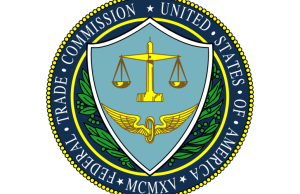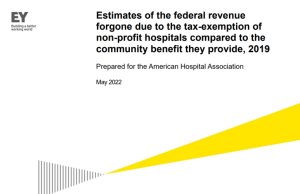The American Hospital Association (AHA) is pushing back against a report suggesting nonprofit health organizations are putting profits before patients and not providing enough charity care to justify the tax exemption they receive.
The pushback, centering largely on the methodology researchers used to reach this conclusion, comes amid growing scrutiny by federal lawmakers into whether the community benefit provided by some of these hospitals sufficiently accounts for the tax break, a question with which some state leaders have been grappling.
Health Affairs, a peer-reviewed healthcare journal, features the report in its June 2023 edition. The report is based on a study of financial data from 2,219 nonprofit hospitals and 564 for-profit hospitals compiled by the National Academy for State Health Policy. Researchers for the academy, a forum of state health policy experts, gathered the data from hospitals’ required financial disclosures to the Centers for Medicare and Medicaid Services (CMS) from 2012 through 2019.
“We found that increases in profit at nonprofit hospitals were not correlated with increases in charity care,” the authors wrote. The researchers found nonprofit hospitals decreased their level of charity care while for-profit hospitals increased it even though both saw nearly identical profit margin gains of 36% during the period studied. More specifically, according to the findings:
- Nonprofit hospitals reduced charity care spending by 4.4% during the period studied. For-profit hospitals increased charity care during the same period by 175%, in effect nearly tripling it.
- Nonprofit hospitals in 2012 were providing an average of nearly three times as much charity care as for-profit hospitals. By 2019, for-profit hospitals had almost closed the gap and on average were providing nearly the same level of charity care as nonprofit hospitals.
- The disparity in charity care trends came as nonprofit and for-profit hospitals both substantially grew their cash reserves over the period studied by roughly similar percentages of 68% and 78%.
Melinda Hatton, AHA’s general counsel, has since slammed the report in a blog post criticizing the authors for inflating hospitals’ true profit figures by omitting the costs of bad debt and unreimbursed Medicare expenses from their calculations. She also accused the authors of misleading the public by limiting the discussion of community benefits to charity care while failing to account for other benefits that hospitals provide such as health and wellness education, research, and subsidies for round-the-clock emergency and intensive care.
Hatton further posited that the overall decline in charity care itself has been a result of the significant growth in the number of insured Americans with health care coverage under the Affordable Care Act. However, she didn’t address why nonprofit hospitals reduced charity care while for-profit hospitals dramatically increased it.
The disparity in charity care spending was one of the topics raised during an April 26 congressional hearing on tax-exempt hospitals by the House Ways and Means Oversight Committee. Rep. David Schweikert (R-Arizona), who chairs the committee, began the hearing with an opening statement suggesting that “for-profit hospitals may be providing, on average, more charity care than some nonprofit, tax-exempt hospitals.”
Nearly half of all U.S. hospitals are nonprofits according to data from AHA, whose membership includes a mix of nonprofit, for-profit, military and government hospitals according to spokesman Colin Milligan. The percentage of nonprofit hospitals rises to nearly 60% if military and government hospitals are excluded.
An analysis by the Kaiser Family Foundation pegged the total value of nonprofit hospitals’ tax exemption during 2020 at $28 billion, which researchers found was higher than the $16 billion in free or discounted care they provided that year. However, the researchers also acknowledged that charity care is just one element of the community benefits hospitals provide.
Complicating matters further is that the IRS doesn’t state a specific minimum requirement of community benefits that nonprofit hospitals must provide as a condition of their tax exemption, nor does it give guidance on how much of this must include charity care.
The authors of the report, while acknowledging the necessity of cash reserves to cover hospitals’ unforeseen expenses and ensure their financial health, argue that the “significant allocation of profits toward cash reserves relative to charity care would call into question the justification for favorable tax treatment of nonprofit hospitals… Our results suggest that linking minimum contributions to charity care with profit increases may be helpful.”
The report was prompted in part by what the authors noted have been recent news articles in the New York Times and Wall Street Journal indicating that nonprofit hospitals were reducing staff, demanding payment from patients legally entitled to receive charity care, and continuing to shift services from low-income to high-income neighborhoods despite increasing profits. It also followed reporting by The NonProfit Times on recent state court rulings out of Pennsylvania and New Jersey, where nonprofit hospitals have had their property tax exemptions rolled back based on what judges found to be executive compensation exceeding what was appropriate for institutions with a purely charitable mission.








